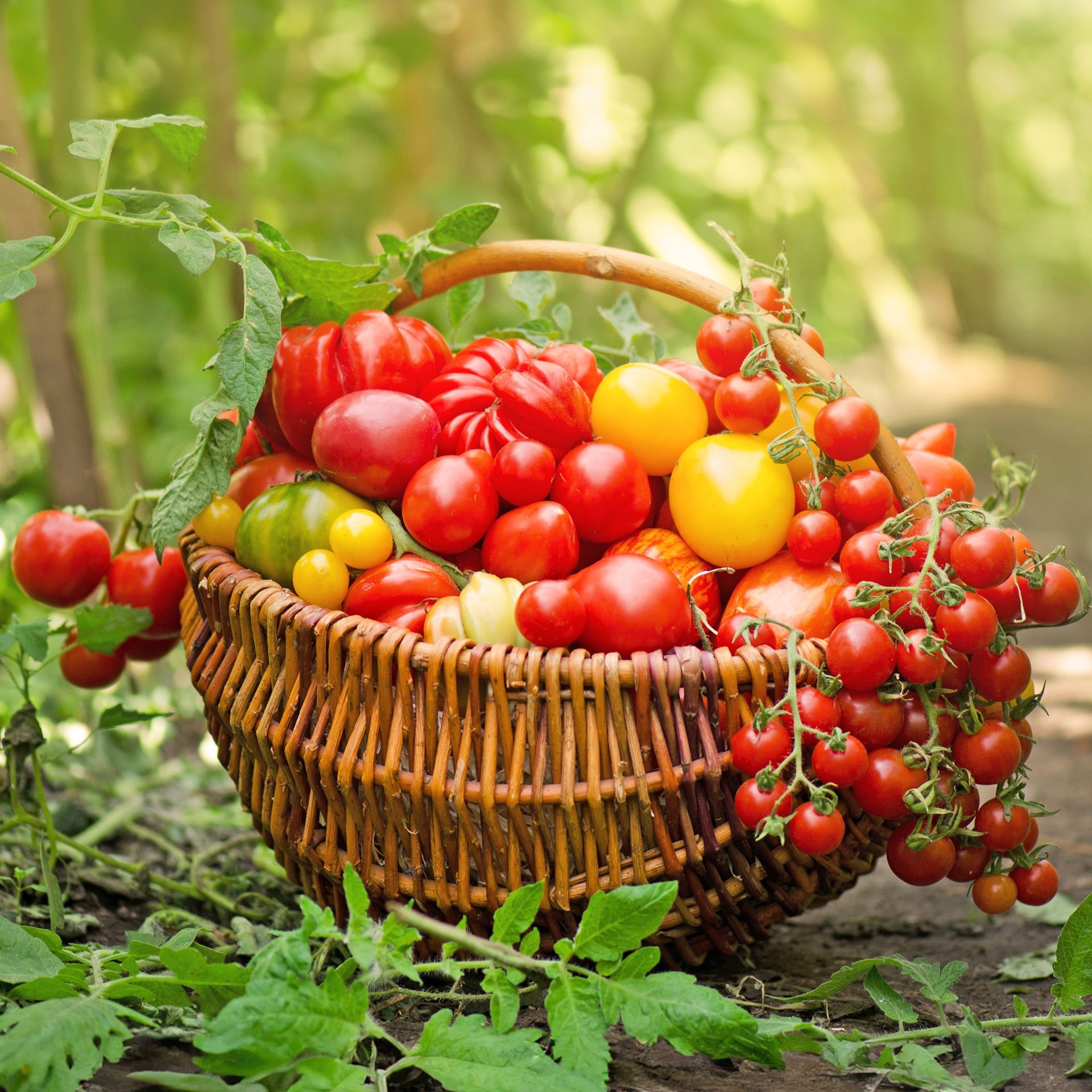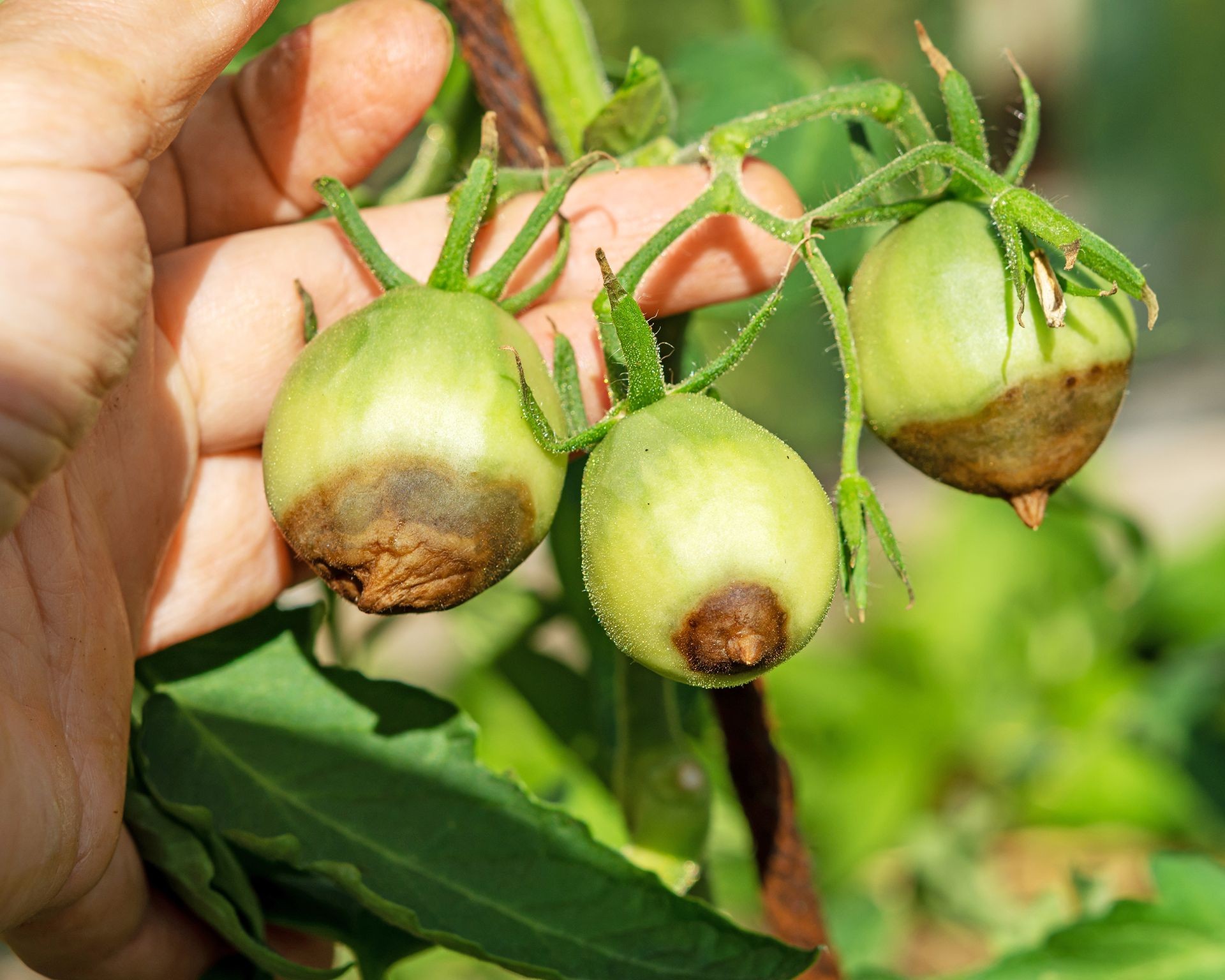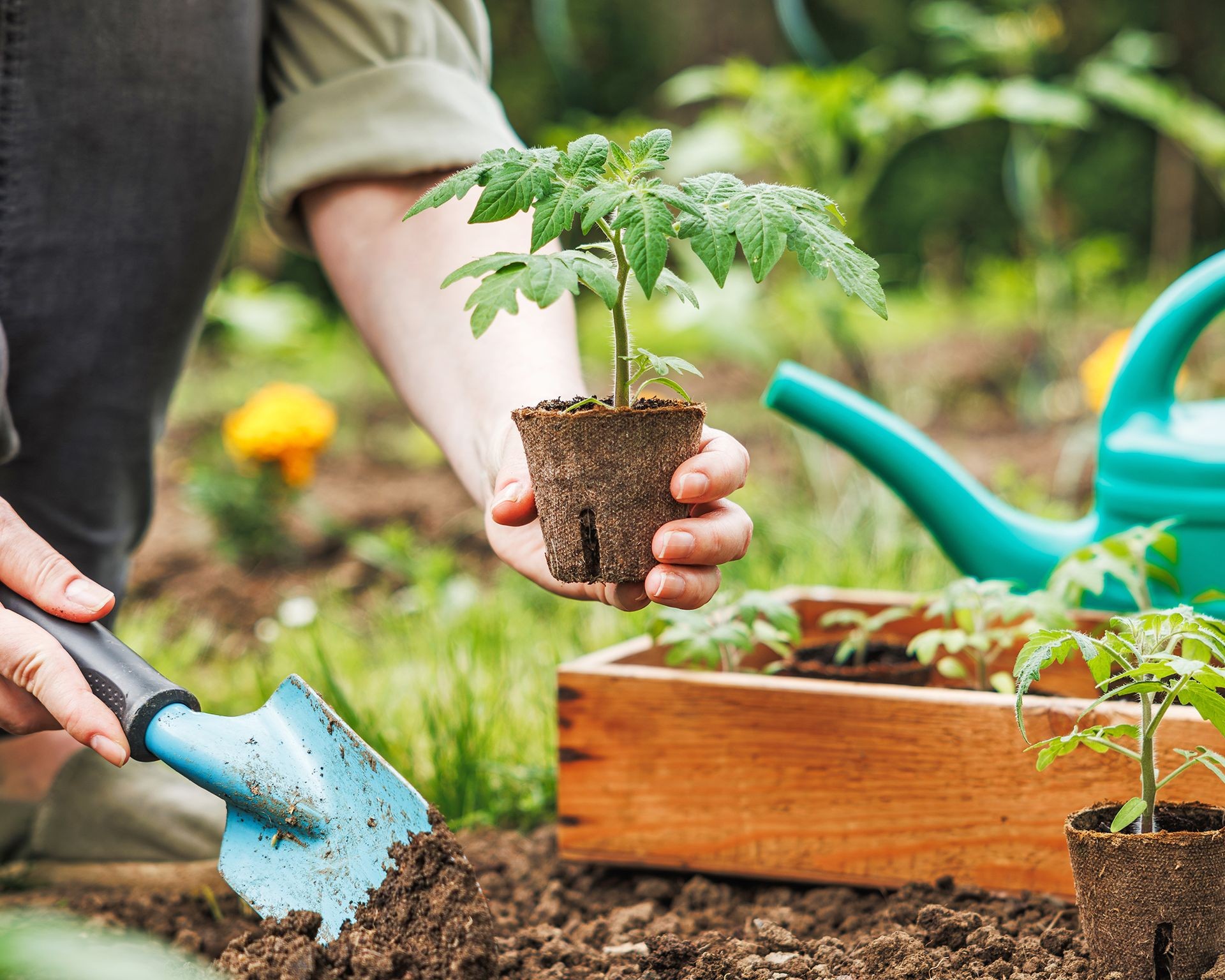No products in the cart.
NEWS
Unlocking Abundant Harvests: The Essential Role of Calcium for Tomato Plants
As passionate gardeners, we pour our efforts into nurturing our tomato plants, dreaming of that first bite of a sun-ripened, juicy fruit. We carefully select varieties, prepare the soil, water diligently, and provide support. Yet, sometimes, issues like the dreaded blossom end rot (BER) appear, leaving us frustrated. While often associated with BER, calcium plays a far more foundational role in tomato plant health and productivity. Understanding its importance from the very beginning of the growing cycle through fruit development is key to achieving consistent, high-quality yields. Calcium isn’t just a quick fix for a symptom; it’s a vital building block for robust growth and perfect fruit formation.
Calcium is a crucial mineral required by all plants, though often in smaller quantities compared to primary nutrients like nitrogen, phosphorus, and potassium. Within the plant, calcium acts like a structural engineer. It’s essential for building and maintaining strong cell walls and membranes, giving plant tissues their firmness and integrity. Beyond structure, calcium is involved in regulating the movement of water and nutrients within the plant. It helps control the opening and closing of stomata – the tiny pores on leaves responsible for gas exchange and transpiration, which is the process of water moving through the plant and evaporating from leaves. This regulation is critical for the plant’s overall hydration and nutrient uptake efficiency. For tomatoes, a demanding crop, ensuring adequate calcium availability is a fundamental step towards a successful season.
Why Do Tomatoes Need Calcium? Unpacking Its Vital Functions
Tomato plants have a particularly high demand for calcium, especially as they grow rapidly and begin setting fruit. This essential mineral performs several non-negotiable functions throughout the plant’s life cycle:
- Reinforcing Cell Structure: Calcium is integrated into pectin, a substance that acts like glue between plant cells. Strong cell walls are vital for maintaining the plant’s upright structure, preventing wilting, and ensuring the firmness of leaves, stems, and most importantly, the fruit.
- Facilitating Nutrient Transport: Calcium plays a role in regulating how other nutrients are absorbed and moved throughout the plant, particularly into the rapidly growing areas like root tips, new leaves, and developing fruits.
- Balancing Electrical Signals: It helps maintain the balance of positive and negative ions within plant cells, which is necessary for various cellular processes and signaling.
- Supporting Root Development: Adequate calcium promotes healthy root tip growth, allowing the plant to establish a strong foundation for absorbing water and nutrients from the soil.
- Enhancing Pollen Viability: Calcium is important for pollen tube growth, contributing to successful pollination and subsequent fruit set.
- Ensuring Proper Fruit Development: This is where calcium’s role becomes most visible to the gardener. As tomato fruits enlarge, calcium is needed to build the cell walls in the developing fruit tissue.
Without sufficient calcium uptake, the consequences can be significant. The most well-known symptom of severe calcium deficiency in tomatoes is Blossom End Rot (BER). This condition manifests as a dark, sunken, leathery patch, typically on the bottom (blossom end) of the fruit. It occurs because, without enough calcium to build sturdy cell walls, the rapidly expanding cells in the fruit collapse. While BER is the most obvious sign, chronic low calcium availability can also contribute to weaker overall growth, reduced yield, and less firm fruit. Understanding calcium’s multifaceted role highlights why proactive management is far more effective than just trying to fix BER after it appears.
 Different types of tomatoes freshly harvested from the vegetable garden
Different types of tomatoes freshly harvested from the vegetable garden
Identifying and Addressing Calcium Deficiency in Tomatoes
Identifying calcium deficiency in tomato plants often starts with observing the fruit for Blossom End Rot. However, it’s crucial to understand that BER isn’t always caused by a lack of calcium in the soil. More often, it’s an issue of the plant’s ability to take up and transport the calcium that is present.
Several factors can interfere with calcium uptake, even if soil tests show sufficient levels:
- Inconsistent Soil Moisture: This is perhaps the most common culprit. Calcium is transported into the plant through the transpiration stream – water absorbed by the roots and moved upwards. If the soil dries out excessively between waterings, or if watering is sporadic (cycles of bone dry followed by soaking), the flow of water, and thus calcium, is interrupted, especially to areas with low transpiration like developing fruit.
- Soil pH Issues: Soil pH significantly impacts nutrient availability. Calcium is less available in very acidic soils (pH below 5.5). While it’s highly available in alkaline soils (pH 7.8 and higher), very high pH can sometimes make other nutrients less available. The ideal soil pH for tomatoes, where calcium and other nutrients are readily accessible, is typically between 6.0 and 6.8.
- Excessive Certain Nutrients: High levels of some other positively charged ions, like magnesium or ammonium nitrogen (often found in high-nitrogen fertilizers), can compete with calcium for uptake by the roots, effectively blocking the plant from absorbing enough calcium.
- Poor Soil Structure: Compacted or poorly draining soil limits root growth and access to soil moisture and nutrients, including calcium.
- Environmental Stress: Extreme temperatures, either very hot or very cold, can stress the plant and disrupt its metabolic processes, including nutrient uptake and transport.
- Container Gardening: Plants in containers are more susceptible to rapid drying out and temperature fluctuations. The limited root space can also make consistent calcium uptake challenging.
Addressing calcium deficiency, therefore, requires a holistic approach that goes beyond simply adding calcium to the soil. It involves optimizing the growing environment to ensure the plant can efficiently absorb and utilize the calcium that is available.
 Gardener examines unripe tomatoes with blossom end rot
Gardener examines unripe tomatoes with blossom end rot
Practical Strategies to Ensure Adequate Calcium
Preventing calcium deficiency and promoting healthy tomato growth is best achieved through proactive management and good gardening practices. Here are key strategies:
Soil Preparation & Amendments
Starting with healthy, well-prepared soil is fundamental. Before planting, it’s highly recommended to perform a soil test. This test provides valuable information about your soil’s pH and nutrient levels, including calcium, allowing you to make informed decisions about amendments.
If your soil test indicates low calcium or low pH, appropriate amendments can be incorporated. Lime (either dolomitic or calcitic) is a common way to raise pH and add calcium (dolomitic also adds magnesium, so be mindful of magnesium levels). Gypsum can add calcium without significantly altering pH.
Adding organic matter, such as compost or well-rotted manure, is always beneficial. Organic matter improves soil structure, drainage, and water retention, all of which indirectly help calcium uptake. It also provides a slow release of various nutrients as it decomposes.
While often suggested, using crushed eggshells directly around plants can be a slow method. Eggshells are primarily calcium carbonate, which takes a long time to break down in the soil and become available to plants. Grinding them into a fine powder can speed this process, but it’s still not an instant fix.
Bone meal is another organic option that contains calcium (typically 12-18%) and phosphorus. Since it’s ground, it becomes available to plants more quickly than unground eggshells, making it a useful amendment to incorporate into the planting hole or side-dress early in the season.
Consistent Watering
Given that inconsistent moisture is a primary cause of calcium uptake issues, establishing a regular watering schedule is critical. The goal is to keep the soil consistently moist, but not waterlogged. Deep, less frequent watering encourages roots to grow deeper, making the plant more resilient. How often you need to water will depend on weather, soil type, and the plant’s size, but avoid letting the soil dry out completely, especially once fruits begin to form.
Mulching around tomato plants with organic materials like straw, shredded bark, or compost helps conserve soil moisture by reducing evaporation. It also helps regulate soil temperature, further benefiting root health and nutrient uptake.
Using Calcium Supplements
When rapid intervention is needed, or if soil issues are difficult to correct quickly, calcium supplements can be used. Calcium nitrate is a soluble form of calcium sometimes recommended for addressing deficiency, though care must be taken with nitrogen inputs.
Liquid calcium products, often marketed as calcium sprays, can be applied directly to the plant leaves as a foliar spray. Foliar feeding can provide a temporary boost, delivering calcium directly to the plant tissues. However, calcium is not easily translocated (moved) within the plant from older leaves to new growth or fruit. Therefore, regular applications (often weekly) are needed, particularly focusing on spraying developing fruits. It’s crucial to apply foliar sprays in the early morning or late evening to avoid leaf burn, especially in bright sun or high temperatures.
 Gardener plants tomato seedling into garden soil
Gardener plants tomato seedling into garden soil
Proactive Plant Care & Prevention
Beyond soil and water, overall plant health significantly impacts nutrient utilization. Stressed plants are more susceptible to deficiency issues. Implementing good cultural practices can prevent many common problems and support the plant’s ability to thrive:
- Manage Soil pH Early: Test and adjust soil pH in the season before planting if possible, allowing amendments like lime time to work. Aim for the optimal 6.0-6.8 range.
- Fertilizer Choice: Be mindful of fertilizers high in ammonium nitrogen, as they can hinder calcium uptake. Consider balanced fertilizers or those where nitrogen is primarily in nitrate form.
- Improve Soil Structure: Continuously building soil health with organic amendments ensures better drainage, aeration, and microbial activity, all beneficial for root growth and nutrient availability.
- Utilize Mulch: As mentioned, mulch is invaluable for moisture regulation and temperature stability.
- Practice Crop Rotation: Rotating where you plant tomatoes each year helps prevent the build-up of soil-borne diseases and pests and allows the soil in previous locations to recover and replenish nutrients.
- Water Deeply: Encourage a robust root system by watering less often but more thoroughly, allowing moisture to penetrate deeper into the soil profile.
By focusing on these preventative steps and creating an optimal environment for your tomato plants, you significantly reduce the risk of calcium deficiency and set the stage for a successful, abundant harvest.
 Eggshells soaked in water make a powerful plant tonic
Eggshells soaked in water make a powerful plant tonic
Exploring Homemade Calcium Solutions
Many readily available materials contain calcium and can be used as supplementary sources for tomato plants, though their effectiveness and speed of availability vary.
Materials you can incorporate into the top layer of soil include:
- Lime (agricultural lime)
- Ground eggshells (finely powdered is best)
- Ground oyster shell
- Hardwood ash (use sparingly as it can raise pH significantly)
- Bone meal
- Gypsum (plaster of paris)
- Rock phosphate (contains calcium and phosphorus)
Remember that incorporating these into the soil helps improve overall soil calcium levels over time, but may not provide an immediate solution for active deficiency symptoms like BER, especially with materials like eggshells that decompose slowly.
A quicker way to potentially supply calcium using homemade methods is through a foliar spray made from eggshells:
- Preparation: Gather clean, dried eggshells. Grind them into a very fine powder using a blender or food processor. The finer the powder, the more surface area is exposed, aiding the release of calcium.
- Extraction: Place the powdered eggshells in a jar. Cover them with white vinegar. The acetic acid in the vinegar will react with the calcium carbonate in the shells, helping to break it down and release calcium into the liquid. Let this mixture soak for several days until the bubbling stops.
- Dilution and Application: Strain the liquid to remove any shell particles. This concentrated liquid should then be diluted with water before use. A typical dilution might be 1 part eggshell/vinegar liquid to 10 parts water, but results can vary based on the concentration achieved.
- Spraying: Apply this diluted mixture as a foliar spray to the leaves and developing fruits of your tomato plants, ideally on a weekly basis. Apply in the morning so the foliage can dry before evening, reducing the risk of fungal issues.
While boiling eggshells in water and using the strained water is sometimes suggested, this method extracts very little calcium compared to the vinegar method because calcium carbonate is not readily soluble in water. The vinegar method provides a more effective way to make calcium from eggshells available in a liquid form for foliar application, although it’s still considered a supplementary approach compared to ensuring optimal soil health and consistent moisture.
Conclusion
Calcium is far more than just a remedy for blossom end rot in tomatoes; it is a fundamental nutrient vital for building strong plant structure, facilitating nutrient flow, and ensuring the development of firm, healthy fruits. While BER is the most visible symptom of deficiency, the underlying causes often relate less to a complete lack of calcium in the soil and more to factors that interfere with the plant’s ability to take it up and transport it, such as inconsistent watering, improper soil pH, and competing nutrients.
Achieving abundant, high-quality tomato harvests depends on a comprehensive strategy that addresses these factors proactively. This includes starting with healthy, well-amended soil, maintaining consistent soil moisture through regular watering and mulching, considering appropriate supplements when necessary, and practicing overall good plant care. By focusing on these foundational principles, you empower your tomato plants to access the calcium they need for robust growth and perfect fruit development. Explore resources and products that support soil health and plant nutrition to give your tomatoes the best possible start and continuous support throughout the season.



